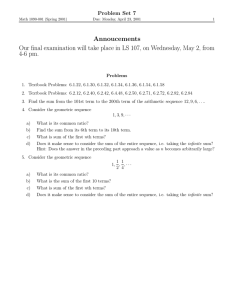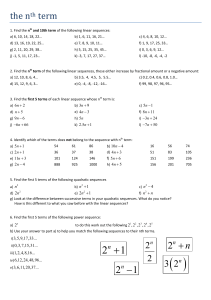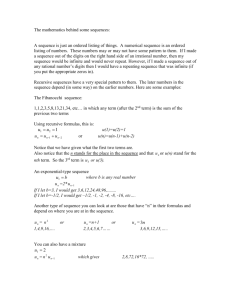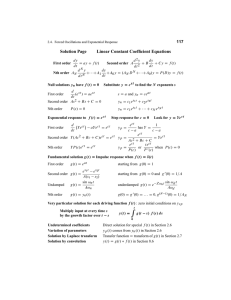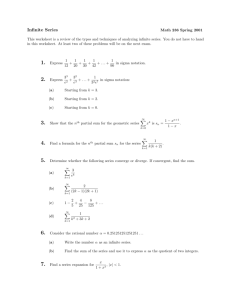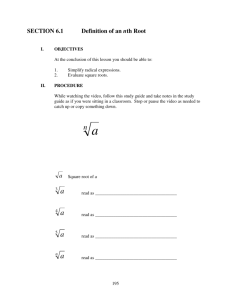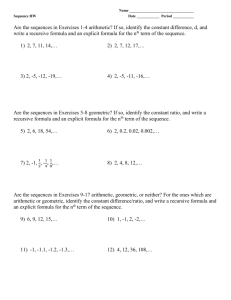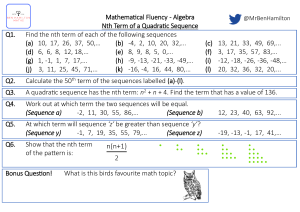Cantor`s original proof considers an infinite sequence of the form (x1
advertisement
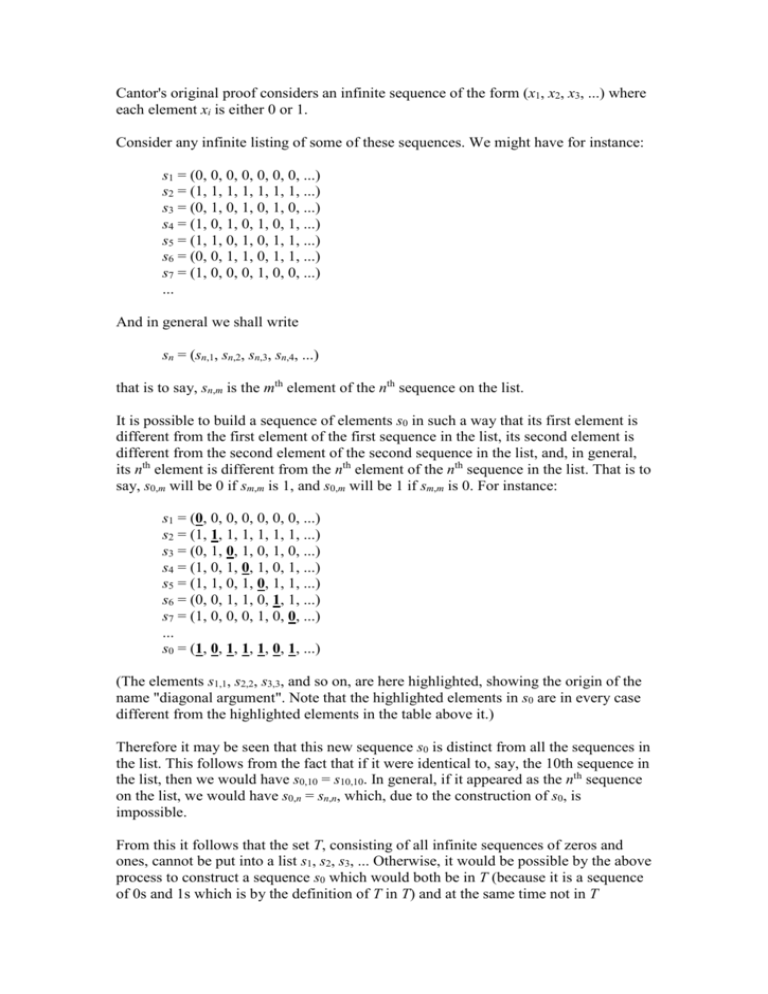
Cantor's original proof considers an infinite sequence of the form (x1, x2, x3, ...) where each element xi is either 0 or 1. Consider any infinite listing of some of these sequences. We might have for instance: s1 = (0, 0, 0, 0, 0, 0, 0, ...) s2 = (1, 1, 1, 1, 1, 1, 1, ...) s3 = (0, 1, 0, 1, 0, 1, 0, ...) s4 = (1, 0, 1, 0, 1, 0, 1, ...) s5 = (1, 1, 0, 1, 0, 1, 1, ...) s6 = (0, 0, 1, 1, 0, 1, 1, ...) s7 = (1, 0, 0, 0, 1, 0, 0, ...) ... And in general we shall write sn = (sn,1, sn,2, sn,3, sn,4, ...) that is to say, sn,m is the mth element of the nth sequence on the list. It is possible to build a sequence of elements s0 in such a way that its first element is different from the first element of the first sequence in the list, its second element is different from the second element of the second sequence in the list, and, in general, its nth element is different from the nth element of the nth sequence in the list. That is to say, s0,m will be 0 if sm,m is 1, and s0,m will be 1 if sm,m is 0. For instance: s1 = (0, 0, 0, 0, 0, 0, 0, ...) s2 = (1, 1, 1, 1, 1, 1, 1, ...) s3 = (0, 1, 0, 1, 0, 1, 0, ...) s4 = (1, 0, 1, 0, 1, 0, 1, ...) s5 = (1, 1, 0, 1, 0, 1, 1, ...) s6 = (0, 0, 1, 1, 0, 1, 1, ...) s7 = (1, 0, 0, 0, 1, 0, 0, ...) ... s0 = (1, 0, 1, 1, 1, 0, 1, ...) (The elements s1,1, s2,2, s3,3, and so on, are here highlighted, showing the origin of the name "diagonal argument". Note that the highlighted elements in s0 are in every case different from the highlighted elements in the table above it.) Therefore it may be seen that this new sequence s0 is distinct from all the sequences in the list. This follows from the fact that if it were identical to, say, the 10th sequence in the list, then we would have s0,10 = s10,10. In general, if it appeared as the nth sequence on the list, we would have s0,n = sn,n, which, due to the construction of s0, is impossible. From this it follows that the set T, consisting of all infinite sequences of zeros and ones, cannot be put into a list s1, s2, s3, ... Otherwise, it would be possible by the above process to construct a sequence s0 which would both be in T (because it is a sequence of 0s and 1s which is by the definition of T in T) and at the same time not in T (because we can deliberately construct it not to be in the list). T, containing all such sequences, must contain s0, which is just such a sequence. But since s0 does not appear anywhere on the list, T cannot contain s0. Therefore T cannot be placed in one-to-one correspondence with the natural numbers. In other words, it is uncountable
